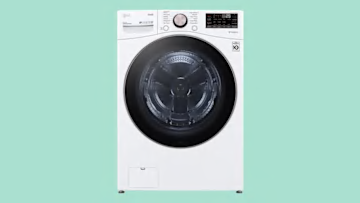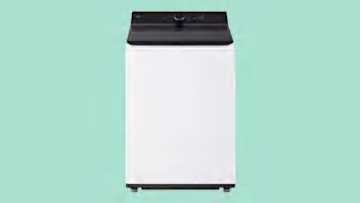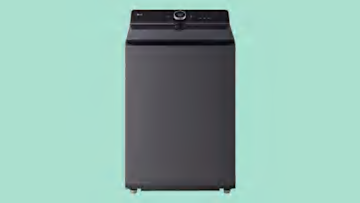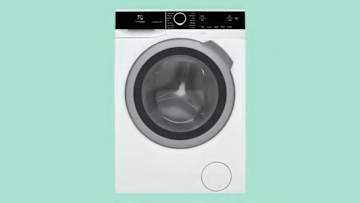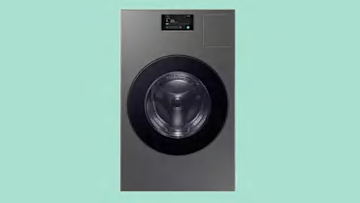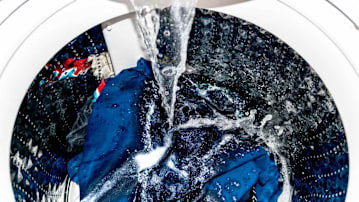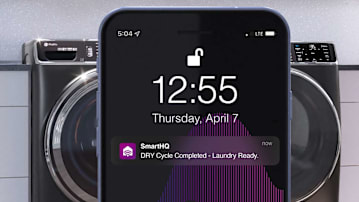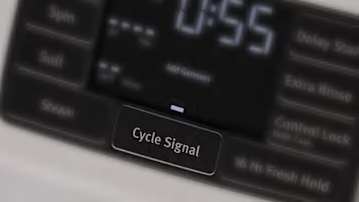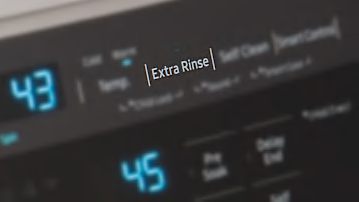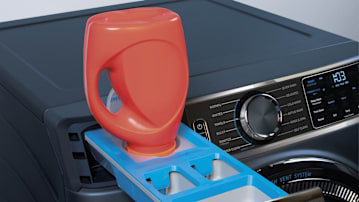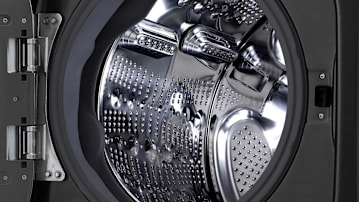Most Popular
Choose the Right Washing Machine for Your Laundry Needs
Front-loader? Top-loader? Compact? Our comprehensive guide will help you choose an effective, reliable, and energy-efficient washer with the capacity, features, and style that work for you.
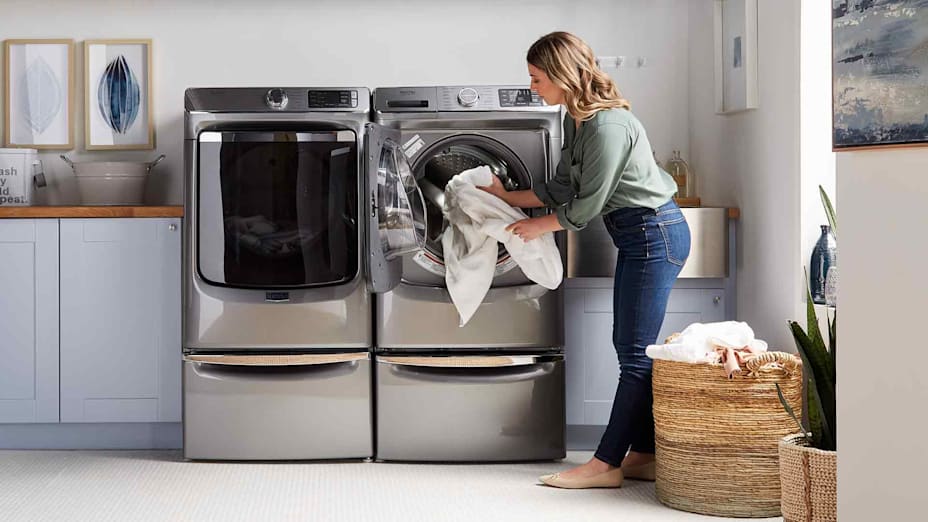
Photo: Maytag

Home & Appliances Writer
Top Washing Machines Questions
What makes a good washing machine?
Sorting, loading, fluffing, and folding clothes is a chore. But when it comes to the dirty work—the actual cleaning—an efficient washing machine can lighten your load. Here’s what makes a good washer.
-
Powerful cleaning
Illustration: Consumer ReportsAided by an effective laundry detergent, a good washer will clean your clothes gently and thoroughly, remove stains and odors, and fully extract excess moisture after the wash cycle.
-
Sufficient capacity
Illustration: Consumer ReportsDrum size matters, especially if you wash bulky bedding, thick towels, or large family loads. You’ll need a washer with at least 4.5 cubic feet of capacity to handle a king-size comforter. In our ratings, you’ll find washers with capacities ranging from a 1.9-cubic-foot compact to a 5.8-cubic-foot front-loader.
-
Customized cycles
Illustration: Consumer ReportsMost people use a washer’s normal cycle, but today’s smart washers can elevate your laundry experience with customized settings, WiFi connectivity, and AI technology.
-
Water and energy efficiency
Illustration: Consumer ReportsToday’s washing machines clean clothes using less energy and water than ever before. Look for an Energy Star certified or CR-designated Green Choice model. Green Choice appliances not only are highly energy- and water-efficient but also have a lower environmental impact throughout their life cycle.
-
Handy features
Illustration: Consumer ReportsA stainless steel drum adds to a washer’s cost but lasts longer than a plastic or porcelain-coated steel one. Automatic dispensers release detergent and fabric softener at precise times during a cycle, which prevents overdosing.
-
Reliability
Illustration: Consumer ReportsWe survey CR members annually to find out how reliable their washers are and whether they’re satisfied with their appliances. We also gather data on any problems they’ve had with their washers over a decade. For more, read our guide to the most and least reliable washing machine brands.
Which type of washing machine should I choose?
Each type of washing machine has its advantages and drawbacks. Do you prefer loading laundry from the top of a machine rather than bending to load a front-loader? Or would you prefer a large-capacity front-loader for laundering large blankets or comforters? The descriptions below are general and based on washing machines we have tested; see our ratings to find out details on the individual model you're considering.
-
Front-Load Washers
PRICE $650-$2,200wash times (normal/heavy cycle) 65 to 120 min.CAPACITY Up to 5.8 cubic feetpros & consFront-Load Washers Ratings- Energy- and water-efficient (typically using 10 gallons per load)
- Gentle on fabrics
- Spin cycle extracts water effectively for shorter drying time
- Long wash times; can be prone to mold, mildew, and odors
-
Top-Load Agitator Washers
PRICE $380-$1,600wash times (normal/heavy cycle) 35 to 105 min.CAPACITY Up to 5.4 cubic feetpros & consTop-Load Agitator Washers Ratings- Can be least expensive
- Shorter wash cycles than front-loaders
- Rough on fabrics; can be noisy
- Water guzzlers (using about 20 gallons per load); may not clean heavy soil/stains well
-
High-Efficiency Top-Load Washers
price $515-$1,200WASH TIMES (normal/heavy cycle) 35 to 105 min.CAPACITY Up to 5.5 cubic feetpros & consHigh-Efficiency Top-Load Washers Ratings- Very good to excellent wash performance
- Water-efficient (using about 13 gallons per load)
- High spin speed tends to tangle clothes
- Longer wash times than agitator machines
-
Compact Front-Load Washers
PRICE $630-$2,450WASH TIMES (normal/heavy cycle) 60 to 100 min.CAPACITY Up to 2.7 cubic feetpros & consCompact Front-Load Washers Ratings- Excellent or very good energy and water efficiency
- Ideal for tight spaces
- Wash times can be long
- Tend to vibrate
-
All-in-One Washer-Dryers
PRICE $1,390-$2,050wash times (normal/heavy cycle) 100 to 115 min.CAPACITY Up to 5.3 cubic feetpros & consAll-in-One Washer-Dryers Ratings- Excellent energy and water efficiency
- Very good wash performance
- Exceedingly long drying times
- Slightly larger than standard washers
Should I buy a washer and dryer together?
Manufacturers typically market washers and dryers in sets, pairing machines that are compatible in price, appearance, and cycle options. Some “smart” washer-dryer pairs can even communicate with each other to optimize performance, for example, matching the drying cycle to the cycle selected for the washer.
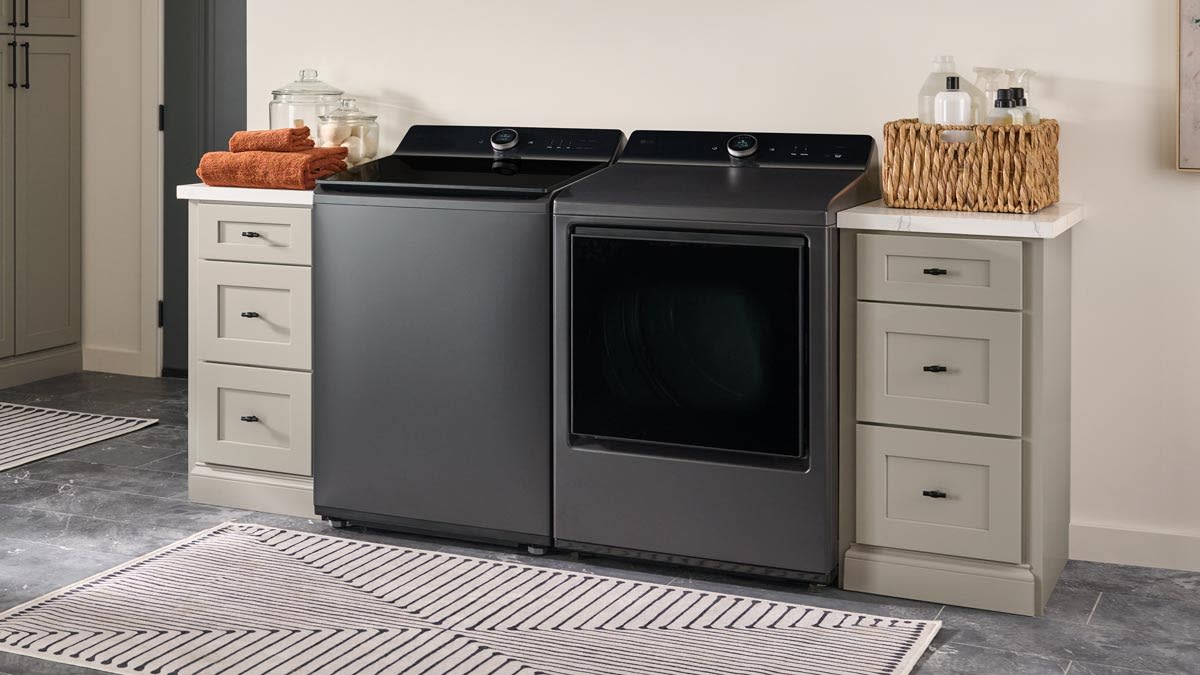
Photo: LG
Compatibility can also include the ability to stack the two machines using specialized hardware. You’re likely to save hundreds of dollars buying both machines in a package bundle deal from manufacturers or retailers.
Whether you opt for a manufacturer’s set or create your own pair, we recommend choosing your washer first. Washers offer a wider variety of features, and there are more washer models to choose from than dryer models. In our ratings, you can look at the combined performance of more than 75 washer-dryer pairs to see which adds up to a match made in heaven.
How do I find a washer that suits my space?
Before you shop, measure your laundry space and doorways, and check the dimensions of the appliance you're considering to ensure your new washer (and possibly dryer) will fit.
-
Most full-sized washers are about 27 inches wide (compacts are about 24 inches wide). Keep in mind that top-loaders tend to be a little taller than front-loaders, but front-loaders are usually a little deeper. Check the dimensions of the specific model you're considering.
-
Allow at least 6 inches behind the washer for water hookups, and about an inch between the washer and dryer.
-
Remember to account for any baseboards or trim when measuring.
-
If you plan to stack your machines, make sure you have enough vertical space available.
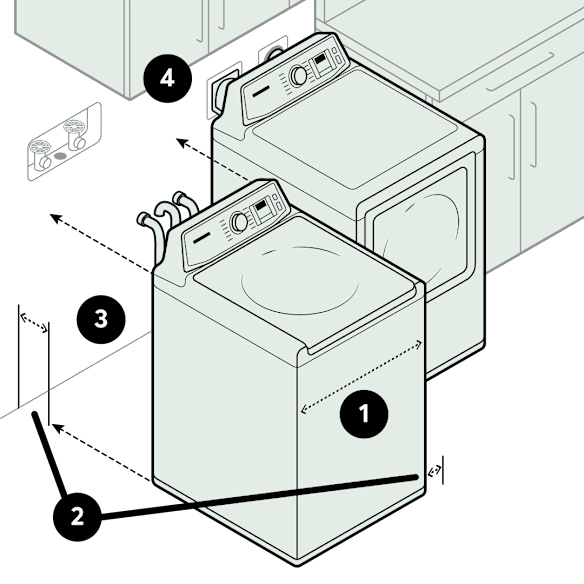
-
Consider an all-in-one
An extra-large washer-dryer combo machine may be hard to squeeze through narrow door frames, but because they don't require vents, they can be set up anywhere there's an electrical outlet and a water hookup. That might be ideal if you live in an apartment or condo, or if you lack space for two appliances.
-
Try stacking
If you don't have the floor space for a side-by-side setup, consider a front-load washing machine upon which you can stack a compatible dryer. Our washing machine ratings note which front-loaders can be stacked with a matching dryer, and we've also identified the best stacking pairs in our ratings.
-
Don't forget about noise
If your washing machine will be located near a living area—especially bedrooms—consider a model that earns a very good or excellent score in our noise and vibration tests. We measure how much vibration the washer transmits to a wood floor, and our panelists judge the washer's noise levels during the fill, run, drain, and spin cycles.
-
Contemplate a compact
When space is really at a premium, your only option may be a compact washer (and matching dryer). All of the compact washers we’ve tested are stackable front-loaders, and most perform well. They fall in a similar price range as their full-sized cousins and tend to be gentle on clothes, and many are water- and energy-efficient.
How much capacity do I need?
You’ll want to make sure the washing machine you buy is large enough to handle a typical-sized load for your household. In our ratings, you’ll find washers with capacities ranging from 1.9 to 5.8 cubic feet.
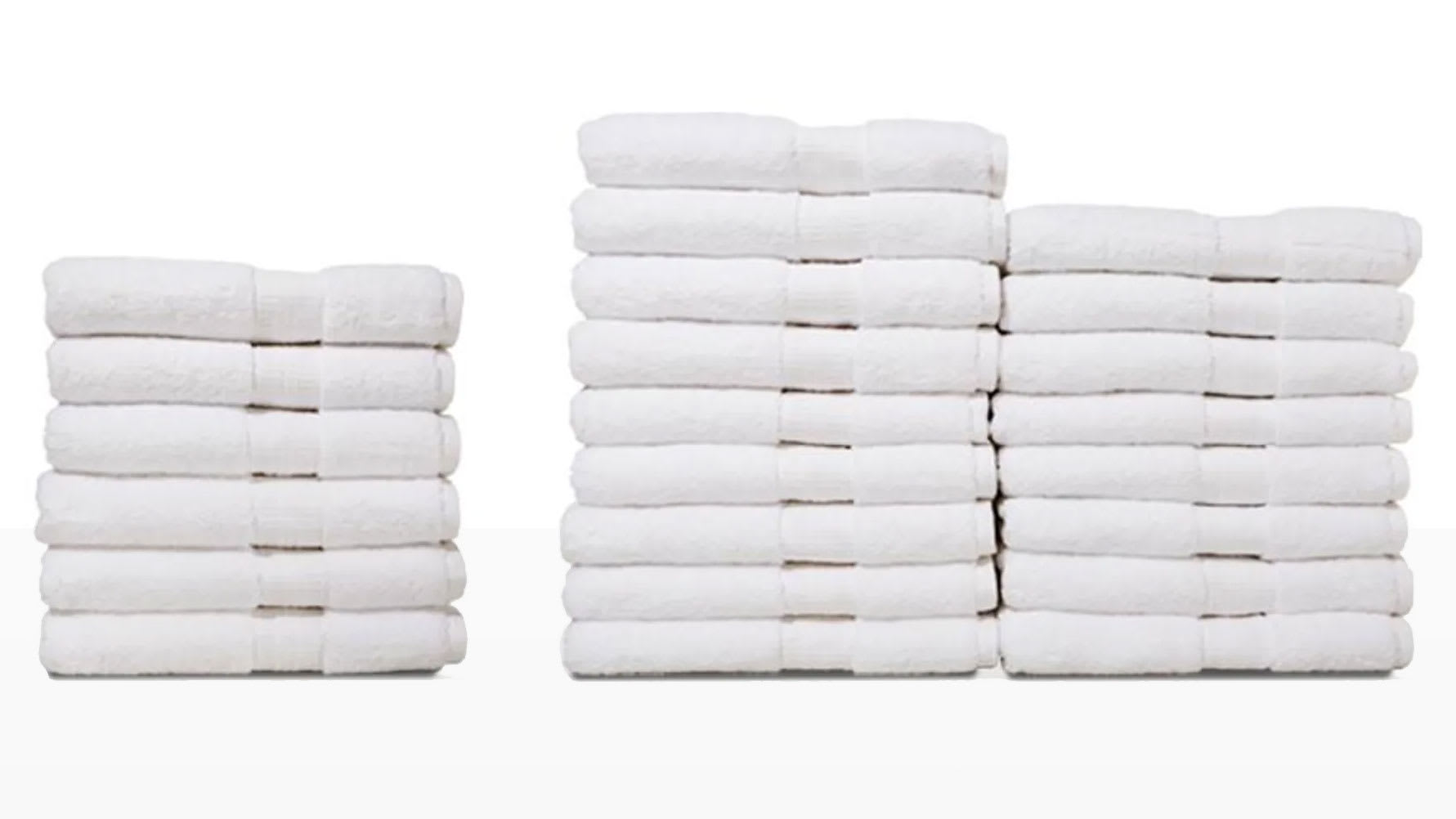
Consumer Reports marks out each washer’s actual capacity, helping you choose a machine depending on what your load looks like normally.
Photo: Consumer Reports
For reference, a large washing machine with an extra-large 6.2-cubic-foot capacity can hold 17 thick, full-sized bath towels, while compact washers, which have a claimed capacity of 2.7 cubic feet or less, can fit about six of these towels. Washers with a capacity of more than 4.5 cubic feet fit a king-size comforter in our tests.
What makes a washing machine a CR Green Choice?
CR’s Green Choice designation assesses a washing machine’s environmental impact from its manufacture to distribution, use, and eventual disposal. Green Choice washers earn top marks in key environmental assessments that include performance score, water and energy efficiency, brand reliability, shipping footprint, gentleness on fabrics, price, warranty, and special features such as eco cycles. You can view CR Green Choice washers in our ratings (they’re identified by our green leaf icon) and find the ones we’ve judged to be the best in The Best Eco-Friendly Washing Machines.
Water efficiency
Green Choice washers wash clothes effectively using no more than 10 gallons of water to wash an 8-pound load of laundry (6 pounds for compacts).
Energy efficiency
Green Choice washers use on average 0.236 kilowatt-hours of energy per load (about 4 cents’ worth of electricity).
Interior materials
Stainless steel drums are more durable and easier to recycle than plastic ones, so washers with stainless steel drums are considered better for the environment.

Brand reliability
CR’s annual member survey reveals which brands produce washing machines that are most likely to last longer, requiring less frequent replacement.
Shipping footprint
We calculate a washer’s carbon footprint using its weight, dimensions, and country of origin, and factor that into its Green Choice score.
Price and warranty
The cost of a washer and the length of its warranty—which you can find in our washing machine ratings—also factor into its Green Choice score.
What are some helpful washing machine features?
-
Automatic temperature control
Photo: Getty ImagesRather than simply mixing hot and cold water in preset proportions, auto temperature control adjusts the water to the optimal temperature for the selected setting.
-
WiFi capabilty
Photo: GEThis feature lets you communicate with your washer via a phone app. You can start, stop, or pause a cycle, get end-of-cycle or maintenance notifications, download new cycles, and measure energy use.
-
End-of-cycle signal
Photo: Consumer ReportsA snappy tune or string of beeps alerts you that it’s time to move your clean laundry from the washing machine to the dryer.
-
Extra rinse cycle
Photo: Consumer ReportsThis can help if your skin is sensitive to detergent residue, and help wash away pet hair and other stubborn messes. (That said, you should remove as much pet hair as possible from fabrics before putting them into the washer.)
-
Automatic dispensers
Photo: GEThis feature is designed to dispense detergent, bleach, and fabric softener at the right time during a cycle. Some washing machines can hold several months’ worth of detergent.
-
Stainless steel tub
Photo: Consumer ReportsMost washers that CR tests now have stainless tubs. They can withstand higher spin speeds than plastic tubs, extracting more water and cutting drying time.
How do I maintain my washer?
These simple tips from CR's Keith Flamer can help you keep your washer (and dryer) performing at their best.






















